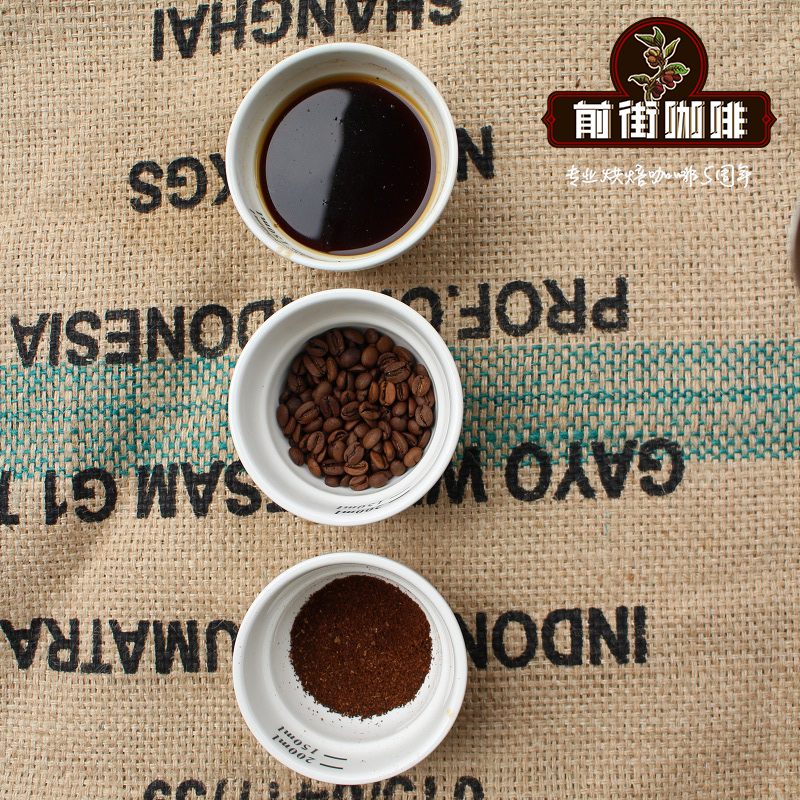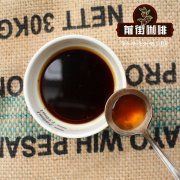What is the difference between Italian coffee and Blue Mountain coffee beans compared to Blue Mountain coffee and Italian coffee?

Professional coffee knowledge exchange more coffee bean information please follow the coffee workshop (Wechat official account cafe_style)
The Blue Mountains are located in the eastern part of the island of Jamaica, hence its name because it is surrounded by the Caribbean Sea. On clear days, the sun shines directly on the blue sea, and the peaks reflect the bright blue light of the sea.
What are Blue Mountain Coffee beans?
The coffee variety grown in the Blue Mountain of Jamaica is Typica, which is a world-famous coffee breed. In addition to Blue Mountain, the famous Kona of Hawaii and Manning of Sumatra also come from this coffee variety.
The unique geographical advantage is an indispensable factor to achieve a balanced flavor of Blue Mountain Coffee. As an island nation in the Caribbean, sea breeze and blue mountains bring abundant rainfall and fertile land to this coffee growing area. On the other hand, the volcanic soil gives Blue Mountain Coffee a warm and peaceful flavor compared to the relatively high altitude.
Only coffee produced between 910m and 1700 m above sea level can be called "Jamaican Blue Mountain Coffee". Produced from 460 to 910 meters above sea level can only be called "Jamaican Alpine Coffee". Those produced below 460 meters can only be called "Jamaican Supreme Coffee" or "Jamaican low Mountain Coffee".
What are Italian coffee beans?
Italian coffee beans refer to coffee beans made of different coffee varieties, the earliest blending must be to reduce costs, there is no doubt, such as using 70% cheap beans, add some good flavor beans seasoning, but into the era of boutique coffee, reducing costs is not the only goal, guests will be more concerned about flavor, for their favorite taste, can pay a higher price.
Based on this market change, there are several common matching methods now. the first is the two-male model, in which two beans account for about 50% each, and occasionally a certain bean accounts for up to 70%. But it is definitely not for the purpose of reducing the cost, just because the bean has a better flavor, or to achieve a balance in some aspects, such as one out of the sweet and sour and the other bitter. One out of flavor, one out of alcohol thickness and so on.
The other is the three swordsmen model, the most common is the Asian-African-Latin American match, Asia's Mantenin, Africa's Yejia snow coffee, Latin America's Brazil. As for why it is spelled like this, I think it may be due to the traditional Mamba blending, that is, Brazilian Mantning, which is generally low acidity and mellow taste, which is a very traditional blending method, even before the emergence of the concept of boutique coffee. Restaurants such as Shangdao Coffee, the early domestic coffee brands, explicitly spelled the mamba on the menu. Yega should be added on this basis, should be in order to cater to the fine coffee must have a sour wave, do not need sour, then I add a sour Yega! Similar variants include Brazil + Costa Rica + Yega and so on.
Blue Mountain Coffee and Italian Coffee
Hawaii is located in the coffee belt, has fertile volcanic soil, fresh air, no pollution, humid climate, foggy and rainy all the year round (the average precipitation is 1980 mm, the temperature is around 27 degrees), such a climate has created the world-famous Jamaican Blue Mountain Coffee and one of the most expensive coffee in the world. This kind of coffee has the characteristics of all good coffee, not only full-bodied and mellow, but also because of the perfect combination of sweet, sour and bitter coffee, it has no bitter taste at all, only moderate and perfect sour taste, and is generally drunk alone.
The extraction method of espresso is to use the pressure of 9par to extract, the amount of powder is small, the flavor is very strong, because there is oil, the taste is sticky and mellow.
The difference between the two types of coffee beans is very big, and the output and price are also very different.
END
Important Notice :
前街咖啡 FrontStreet Coffee has moved to new addredd:
FrontStreet Coffee Address: 315,Donghua East Road,GuangZhou
Tel:020 38364473
- Prev

Is Blue Mountain Coffee American Coffee? how does Blue Mountain No.1 Coffee Bean taste bitter?
Professional coffee knowledge exchange more coffee bean information please pay attention to the coffee workshop (Wechat official account cafe_style) all the coffee on the Blue Mountain is called Blue Mountain Coffee, only a specific altitude range of coffee is certified (certificated), the annual output is very small, most
- Next

What does Blue Mountain Coffee have to do with Blue Mountain Coffee in Australia? how much is a bag of Blue Mountain Coffee?
For more information on coffee beans, please follow the coffee workshop (official Wechat account cafe_style). People who don't drink coffee very much may know that there is a kind of coffee that is very good, but they have never tasted it. Most of this kind of situation is known through population transmission, and we hear its voice before we see its beans. This coffee is the world-famous Blue Mountain Coffee. Blue Mountain Coffee
Related
- Beginners will see the "Coffee pull flower" guide!
- What is the difference between ice blog purified milk and ordinary milk coffee?
- Why is the Philippines the largest producer of crops in Liberia?
- For coffee extraction, should the fine powder be retained?
- How does extracted espresso fill pressed powder? How much strength does it take to press the powder?
- How to make jasmine cold extract coffee? Is the jasmine + latte good?
- Will this little toy really make the coffee taste better? How does Lily Drip affect coffee extraction?
- Will the action of slapping the filter cup also affect coffee extraction?
- What's the difference between powder-to-water ratio and powder-to-liquid ratio?
- What is the Ethiopian local species? What does it have to do with Heirloom native species?

